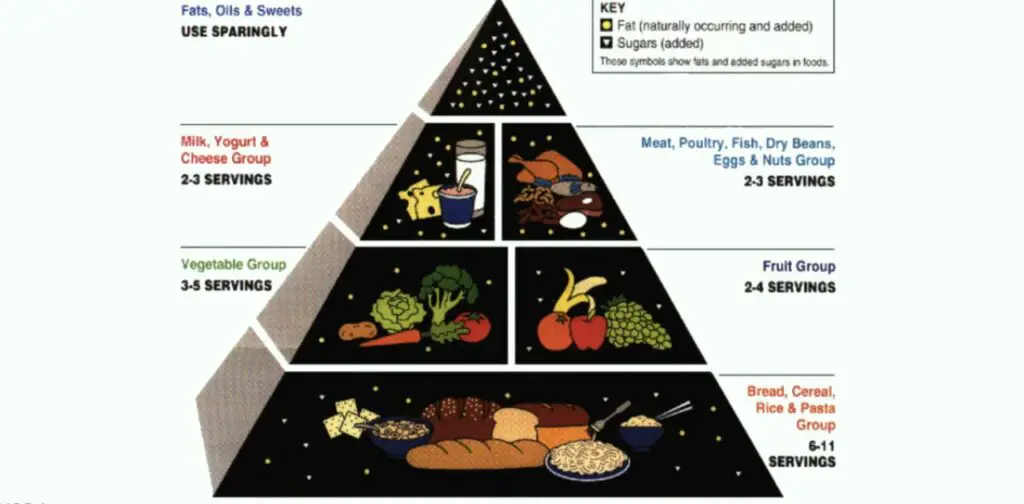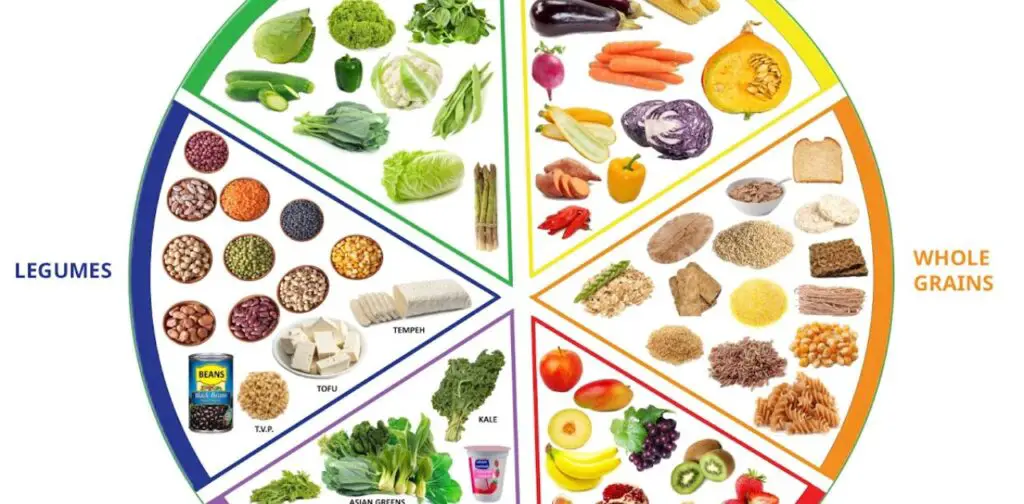In an age where health and nutrition are at the forefront of public consciousness, it is vital to have clear, reliable tools to guide our dietary choices. The food triangle is one such model, designed to simplify the complexities of nutrition and help individuals make informed, balanced dietary decisions. But what exactly is a food triangle, and how can it be used to improve your diet?
In this comprehensive guide, we’ll explore the food triangle in depth, covering its origins, its components, and practical ways to incorporate it into daily life. Whether you’re new to the concept or looking to deepen your understanding, this article will provide the insights you need to embrace the food triangle as a key part of your health journey.
Understanding the Concept of the Food Triangle
The Evolution of Dietary Guidelines
To fully appreciate the food triangle, it’s important to understand the history of dietary guidelines. For decades, the food pyramid was the most widely recognized symbol of balanced eating in the United States. Introduced by the U.S. Department of Agriculture (USDA) in 1992, the food pyramid aimed to guide Americans toward healthier eating habits by categorizing foods into different groups, each represented by a level on the pyramid.
The base of the pyramid was devoted to grains, particularly breads, cereals, rice, and pasta, emphasizing their importance in providing energy through carbohydrates. As one ascended the pyramid, the focus shifted to fruits and vegetables, then to proteins and dairy, with fats, oils, and sweets occupying the small tip of the pyramid. This structure implied that grains should form the largest portion of one’s diet, while fats and sweets should be consumed sparingly.
However, the food pyramid faced criticism over the years. Nutrition experts argued that it placed too much emphasis on carbohydrates, without distinguishing between refined grains (like white bread and pasta) and whole grains (like brown rice and whole wheat bread). Moreover, the pyramid’s one-size-fits-all approach failed to account for the varying dietary needs of different individuals, depending on factors like age, activity level, and health conditions.
In response to these critiques and evolving nutritional science, the USDA replaced the food pyramid with MyPlate in 2011, which presented a more user-friendly visual representation of a balanced plate divided into four sections: fruits, vegetables, grains, and proteins, with a side of dairy. While MyPlate addressed some issues with the pyramid, it still did not fully capture the complexity of nutrition.
The food triangle was developed as a more balanced, nuanced approach to dietary guidelines. Unlike the food pyramid, the food triangle does not rank food groups hierarchically but instead presents them in a more integrated, flexible manner, emphasizing balance and variety. This model is particularly effective in promoting a more holistic view of nutrition, focusing on the quality of food choices rather than merely quantity.
The Basics of the Food Triangle

The food triangle is a modern dietary guide that simplifies nutrition by dividing foods into three essential components: Macronutrients, Micronutrients, and Food Groups. Each side of the triangle represents a fundamental aspect of a balanced diet, providing a comprehensive framework that helps individuals meet their nutritional needs while supporting overall health.
The Three Sides of the Food Triangle
- Macronutrients: These are the nutrients that provide energy and are required in large quantities by the body—carbohydrates, proteins, and fats. The food triangle emphasizes the importance of balancing these macronutrients to ensure that the body has the necessary fuel for daily activities and long-term health.
- Micronutrients: These include vitamins and minerals, which, although needed in smaller amounts, are crucial for various physiological functions. The food triangle highlights the need for a diet rich in micronutrients to support bodily processes such as immune function, bone health, and energy production.
- Food Groups: The triangle divides foods into distinct groups, encouraging a diverse diet that includes fruits, vegetables, grains, proteins, and dairy. Each group provides different essential nutrients, making it important to consume a variety of foods from each group.
How the Food Triangle Differs from the Food Pyramid
The food triangle distinguishes itself from the food pyramid by offering a more balanced and flexible approach to nutrition. While the food pyramid presented a top-down hierarchy, suggesting that some food groups were more important than others, the food triangle treats all components as equally important. This model allows for greater personalization of dietary choices, taking into account individual preferences, cultural dietary practices, and specific health needs.
Additionally, the food triangle places a stronger emphasis on the quality of foods rather than just their category. For example, it encourages the consumption of whole, nutrient-dense foods over processed options. The triangle’s design also makes it easier for individuals to visualize and understand how to balance their diet, making it a practical tool for everyday use.
Detailed Breakdown of the Food Triangle
Macronutrients: The Foundation of the Food Triangle
Macronutrients are the primary source of energy for the body and are crucial for maintaining health. Understanding the role of each macronutrient is essential for building a balanced diet that supports both physical and mental well-being.
Raed `to this blog: How Many Miles Can a Hyundai Elantra Last?
Carbohydrates
Carbohydrates are the body’s preferred source of energy, especially for the brain and muscles. They are found in a wide variety of foods, including grains, fruits, vegetables, and legumes. Carbohydrates can be categorized into two main types: simple and complex.
- Simple Carbohydrates: These are sugars that are quickly absorbed by the body, providing a rapid source of energy. They are found in foods like fruits, honey, and milk, as well as in processed foods like candies and sugary drinks. While naturally occurring sugars in fruits and dairy are part of a healthy diet, added sugars found in processed foods should be limited.
- Complex Carbohydrates: These are made up of longer chains of sugar molecules and take longer to digest, providing a more sustained energy release. They are found in whole grains, legumes, and starchy vegetables like sweet potatoes. Complex carbohydrates are also rich in fiber, which is important for digestive health and helps to maintain stable blood sugar levels.
The food triangle encourages the consumption of complex carbohydrates, particularly whole grains like oats, brown rice, quinoa, and whole wheat bread. These foods are not only more nutritious than refined grains but also provide longer-lasting energy, helping to avoid spikes and crashes in blood sugar levels.
Case Study: The Impact of Whole Grains on Health
A study published in The American Journal of Clinical Nutrition followed over 74,000 women for 12 years and found that those who ate more whole grains had a lower risk of major chronic diseases, including heart disease and type 2 diabetes. This study highlights the importance of choosing whole grains as part of a balanced diet, as emphasized by the food triangle.
Proteins
Proteins are essential for building and repairing tissues, producing enzymes and hormones, and supporting immune function. They are made up of amino acids, some of which are essential, meaning they must be obtained through the diet.
- Animal Proteins: Sources include meat, poultry, fish, eggs, and dairy products. These proteins are considered complete because they contain all nine essential amino acids.
- Plant Proteins: Sources include beans, lentils, tofu, nuts, seeds, and whole grains. Most plant proteins are incomplete, meaning they lack one or more essential amino acids. However, by combining different plant-based proteins (such as beans and rice), one can obtain all essential amino acids.
The food triangle promotes a balanced intake of both animal and plant-based proteins, recognizing the benefits of each. While animal proteins are rich in essential amino acids, plant proteins provide fiber, vitamins, and minerals, and have been associated with a lower risk of chronic diseases.
Table: Protein Sources and Their Nutritional Benefits
| Protein Source | Nutritional Benefits |
|---|---|
| Chicken Breast | High in lean protein, low in fat |
| Salmon | Rich in omega-3 fatty acids, good for heart health |
| Tofu | Plant-based, contains all essential amino acids, low in calories |
| Quinoa | High in protein and fiber, gluten-free |
| Lentils | High in protein and iron, good for vegetarians |
The food triangle’s focus on protein diversity helps ensure that individuals meet their nutritional needs while enjoying a variety of flavors and textures in their meals.
Fats
Fats are often misunderstood but are crucial for good health. They provide energy, support cell growth, protect organs, and help the body absorb certain vitamins. Fats can be categorized into three main types:
- Saturated Fats: Found in animal products like meat and dairy, as well as in tropical oils like coconut oil. These fats can raise cholesterol levels and should be consumed in moderation.
- Unsaturated Fats: Found in plant-based oils (such as olive oil), nuts, seeds, and fatty fish like salmon. These fats are beneficial for heart health and are encouraged by the food triangle.
- Trans Fats: Found in processed foods like baked goods and fried foods. These fats can increase the risk of heart disease and should be avoided as much as possible.
The food triangle emphasizes the importance of including healthy fats in your diet, particularly unsaturated fats. For example, using olive oil in cooking, snacking on nuts, and incorporating fatty fish like salmon into your meals can help reduce the risk of heart disease and support overall health.
Read to this Blog: What is food noise?
Micronutrients: The Supporting Nutrients

Micronutrients, although required in smaller amounts than macronutrients, play a vital role in maintaining health and preventing chronic diseases. These include vitamins and minerals, each of which serves specific functions in the body.
Vitamins
Vitamins are organic compounds that are necessary for various bodily functions, such as energy production, immune function, and blood clotting. There are 13 essential vitamins, including vitamins A, C, D, E, K, and the B-complex vitamins.
- Vitamin A: Important for vision, immune function, and skin health. Found in foods like carrots, sweet potatoes, and spinach.
- Vitamin C: An antioxidant that supports immune function and skin health. Found in citrus fruits, strawberries, and bell peppers.
- Vitamin D: Crucial for bone health and immune function. Found in fatty fish, fortified dairy products, and obtained through sun exposure.
- B-Complex Vitamins: Includes vitamins like B12 and folate, important for energy production, brain function, and red blood cell formation. Found in animal products, leafy greens, and fortified cereals.
The food triangle encourages a varied diet rich in fruits, vegetables, whole grains, and lean proteins to ensure an adequate intake of these essential vitamins. For individuals with specific dietary restrictions or health conditions, supplementation may be necessary, but whole foods are generally the best source of vitamins.
Minerals
Minerals are inorganic elements that support a wide range of bodily functions, including bone health, muscle function, and fluid balance. Key minerals include calcium, potassium, iron, and magnesium.
- Calcium: Essential for bone health and nerve function. Found in dairy products, leafy greens, and fortified plant-based milks.
- Iron: Important for red blood cell production and oxygen transport. Found in red meat, beans, lentils, and fortified cereals.
- Potassium: Helps regulate fluid balance, nerve signals, and muscle contractions. Found in bananas, potatoes, and spinach.
- Magnesium: Involved in over 300 biochemical reactions in the body, including energy production and muscle function. Found in nuts, seeds, whole grains, and leafy greens.
A diet rich in a variety of foods from all food groups, as recommended by the food triangle, will typically provide sufficient amounts of these essential minerals.
Food Groups: Building a Balanced Diet
The food triangle divides foods into five main groups, each providing different essential nutrients. A balanced diet includes a variety of foods from each group.
Fruits and Vegetables
Fruits and vegetables are rich in vitamins, minerals, antioxidants, and fiber. They are essential for preventing chronic diseases like heart disease, cancer, and diabetes. The food triangle encourages filling half of your plate with fruits and vegetables, emphasizing the importance of variety and color.
Benefits of Eating a Rainbow of Fruits and Vegetables
Different colors in fruits and vegetables signify different nutrients. For example:
- Red: Tomatoes and red peppers are rich in lycopene, which supports heart health.
- Orange and Yellow: Carrots and sweet potatoes are high in beta-carotene, which is important for vision and immune function.
- Green: Spinach and broccoli are rich in vitamins K and C, as well as folate and iron.
- Blue and Purple: Blueberries and eggplant contain anthocyanins, which are antioxidants that protect cells from damage.
By eating a variety of colorful fruits and vegetables, you can ensure that you are getting a wide range of nutrients to support overall health.
Grains
Grains are an important source of energy, fiber, and essential nutrients like B vitamins and iron. The food triangle emphasizes the consumption of whole grains over refined grains, as they retain more nutrients and provide longer-lasting energy.
Whole grains like oats, quinoa, brown rice, and whole wheat bread are preferred over refined grains like white bread and pasta. Whole grains are also associated with a lower risk of chronic diseases, including heart disease, diabetes, and certain cancers.
Proteins
As previously discussed, proteins are essential for building and repairing tissues, producing enzymes and hormones, and supporting immune function. The food triangle encourages a balanced intake of both animal and plant-based proteins, recognizing the benefits of each.
Animal proteins, such as meat, poultry, fish, eggs, and dairy, are complete proteins that provide all essential amino acids. Plant proteins, such as beans, lentils, tofu, nuts, and seeds, are also rich in nutrients and have been associated with a lower risk of chronic diseases.
Dairy
Dairy products are a key source of calcium, vitamin D, and other essential nutrients that support bone health. The food triangle includes dairy as an important part of a balanced diet, particularly for individuals who are at risk of osteoporosis or have higher calcium needs.
For those who are lactose intolerant or prefer a plant-based diet, fortified plant-based milks (such as almond, soy, or oat milk) can be a good alternative to dairy. These products often provide similar levels of calcium and vitamin D as dairy milk.
Fats and Oils
Fats and oils are important for energy, cell structure, and the absorption of fat-soluble vitamins (A, D, E, and K). The food triangle encourages the consumption of healthy fats, particularly unsaturated fats from sources like olive oil, avocados, nuts, and fatty fish.
These fats have been shown to reduce the risk of heart disease and support overall health. The food triangle recommends limiting saturated fats and avoiding trans fats, which are associated with an increased risk of heart disease.
Practical Tips for Implementing the Food Triangle in Your Daily Life
Meal Planning and Preparation

One of the best ways to incorporate the principles of the food triangle into your daily life is through meal planning and preparation. By planning your meals ahead of time, you can ensure that you are including a variety of foods from all food groups, balancing macronutrients, and incorporating a range of vitamins and minerals.
Sample Meal Plan
| Meal | Description |
|---|---|
| Breakfast | Oatmeal topped with fresh berries, a handful of nuts, and a drizzle of honey. |
| Snack | Sliced apple with almond butter. |
| Lunch | Grilled chicken salad with mixed greens, cherry tomatoes, cucumber, avocado, and olive oil dressing. Whole grain bread on the side. |
| Snack | Greek yogurt with a sprinkle of granola and sliced bananas. |
| Dinner | Baked salmon with quinoa and steamed broccoli. |
| Dessert | A small piece of dark chocolate and a handful of almonds. |
This sample meal plan demonstrates how the food triangle can be applied to daily eating. Each meal includes a balance of macronutrients and incorporates a variety of food groups, ensuring that nutritional needs are met.
Shopping for Nutrient-Dense Foods
When grocery shopping, focus on nutrient-dense foods that align with the food triangle’s recommendations. This means choosing whole, unprocessed foods like fresh fruits and vegetables, whole grains, lean proteins, and healthy fats. Reading food labels can also help you avoid products high in added sugars, unhealthy fats, and sodium.
Eating Out and Making Healthy Choices
When eating out, it can be challenging to adhere to the principles of the food triangle. However, many restaurants offer healthier options, such as salads, grilled proteins, and whole grain sides. Don’t be afraid to ask for modifications to your meal, such as dressing on the side, steamed vegetables instead of fries, or swapping refined grains for whole grains.
The Importance of Hydration
While the food triangle focuses on food, hydration is also a critical component of a healthy diet. Water is essential for all bodily functions, including digestion, circulation, and temperature regulation. Aim to drink at least 8 glasses of water a day, and more if you are physically active or live in a hot climate.
In addition to water, other beverages like herbal teas and low-fat milk can contribute to your daily hydration needs. However, it’s important to limit sugary drinks, such as soda and fruit juices, as they can contribute to weight gain and increase the risk of chronic diseases.
Common Misconceptions and Clarifications
Confusion Between the Food Triangle and Food Pyramid
There is often confusion between the food triangle and the food pyramid, especially since both models aim to guide healthy eating. However, it’s important to understand that the food triangle offers a more balanced and holistic approach. While the food pyramid prioritizes certain food groups over others, the food triangle emphasizes the importance of balance, variety, and food quality. This distinction makes the food triangle a more adaptable and individualized tool for achieving a healthy diet.
The Role of Processed Foods
The food triangle advocates for minimizing the consumption of processed foods, encouraging whole, natural foods instead. However, it’s important to recognize that not all processed foods are harmful. Some processed foods, such as fortified cereals, canned beans, and dairy alternatives, can be part of a healthy diet. The key is to choose minimally processed options with little added sugar, unhealthy fats, or sodium. When selecting processed foods, look for options that are high in fiber, protein, and essential nutrients, and low in unhealthy additives.
The Future of Dietary Guidelines: Beyond the Food Triangle

Potential Updates and Evolutions
As nutritional science continues to evolve, so too will dietary guidelines like the food triangle. New research on nutrition is constantly emerging, leading to updates in dietary recommendations.
Integration of New Nutritional Research
For example, the importance of gut health and the role of probiotics might become more emphasized in future versions of the food triangle. Probiotics, which are found in fermented foods like yogurt, kefir, and sauerkraut, have been shown to support digestive health and enhance immune function. As more research emerges on the benefits of probiotics and other functional foods, the food triangle may be updated to reflect these findings.
Technology and Personalized Nutrition
The future of nutrition is likely to be more personalized, with the use of technology to tailor dietary recommendations to individual needs. For example, genetic testing can provide insights into how your body responds to different foods, allowing for a more customized approach to nutrition. This could lead to the development of personalized food triangles, which take into account factors like genetic predispositions, lifestyle, and health goals.
Conclusion
The food triangle is a valuable tool for anyone looking to improve their diet and overall health. By focusing on balance, variety, and quality, the food triangle provides a comprehensive framework that can be easily adapted to individual needs and preferences. Whether you are looking to prevent chronic diseases, improve your energy levels, or simply enjoy a more nutritious diet, the food triangle offers practical guidance that can help you achieve your health goals.
By understanding the principles behind the food triangle and incorporating them into your daily life, you can make informed, healthy choices that support long-term well-being. Remember that healthy eating is not about perfection but about making consistent, balanced choices that nourish your body and mind.
So, the next time you plan a meal, shop for groceries, or eat out, keep the food triangle in mind. It’s a simple yet powerful tool that can guide you toward a healthier, more balanced diet—and ultimately, a healthier, more fulfilling life.
4o

Daniel, a seasoned author with 8 years of expertise in SEO, brings a delectable blend of culinary flair and digital finesse to the food niche on his website.


